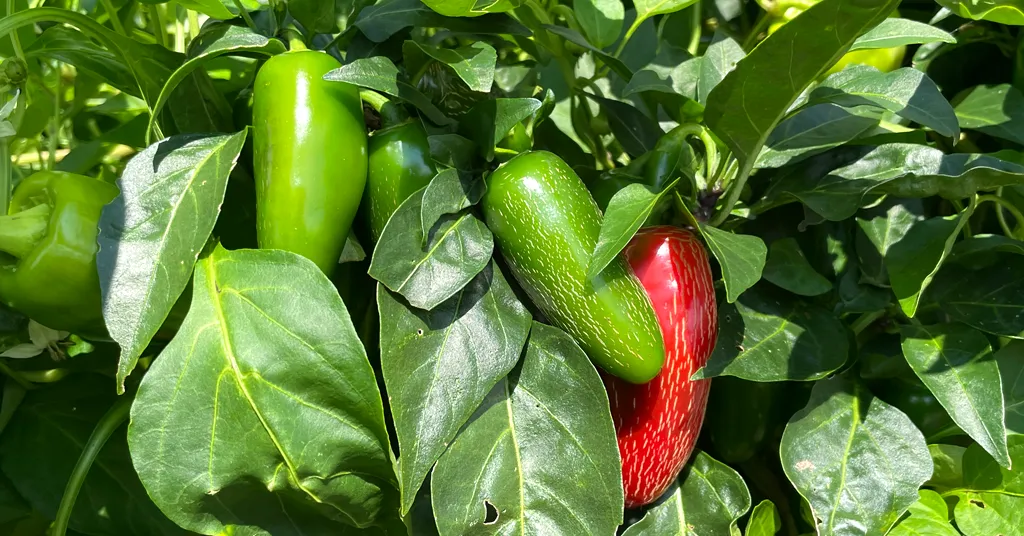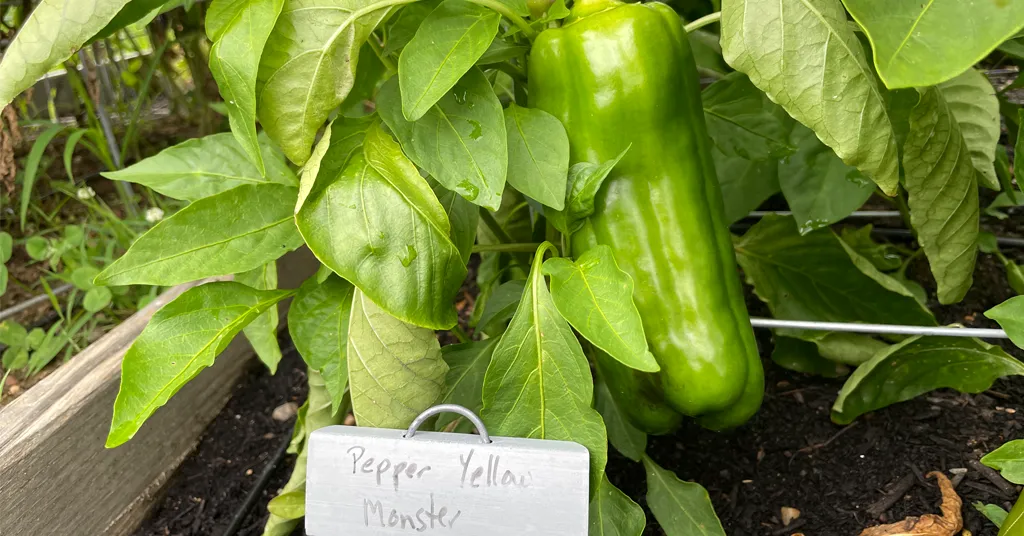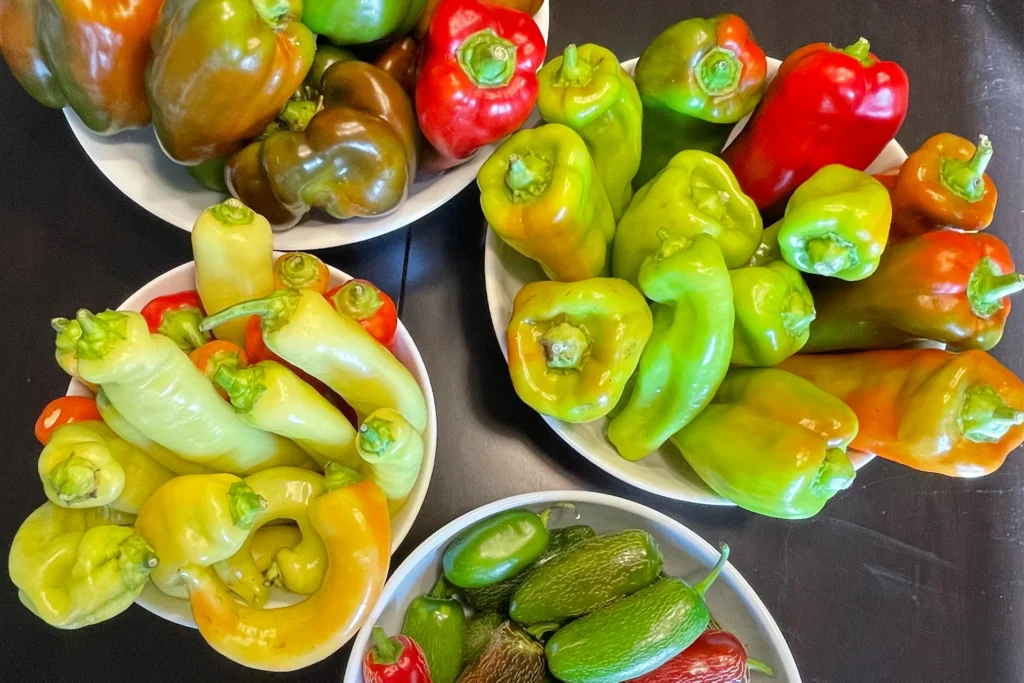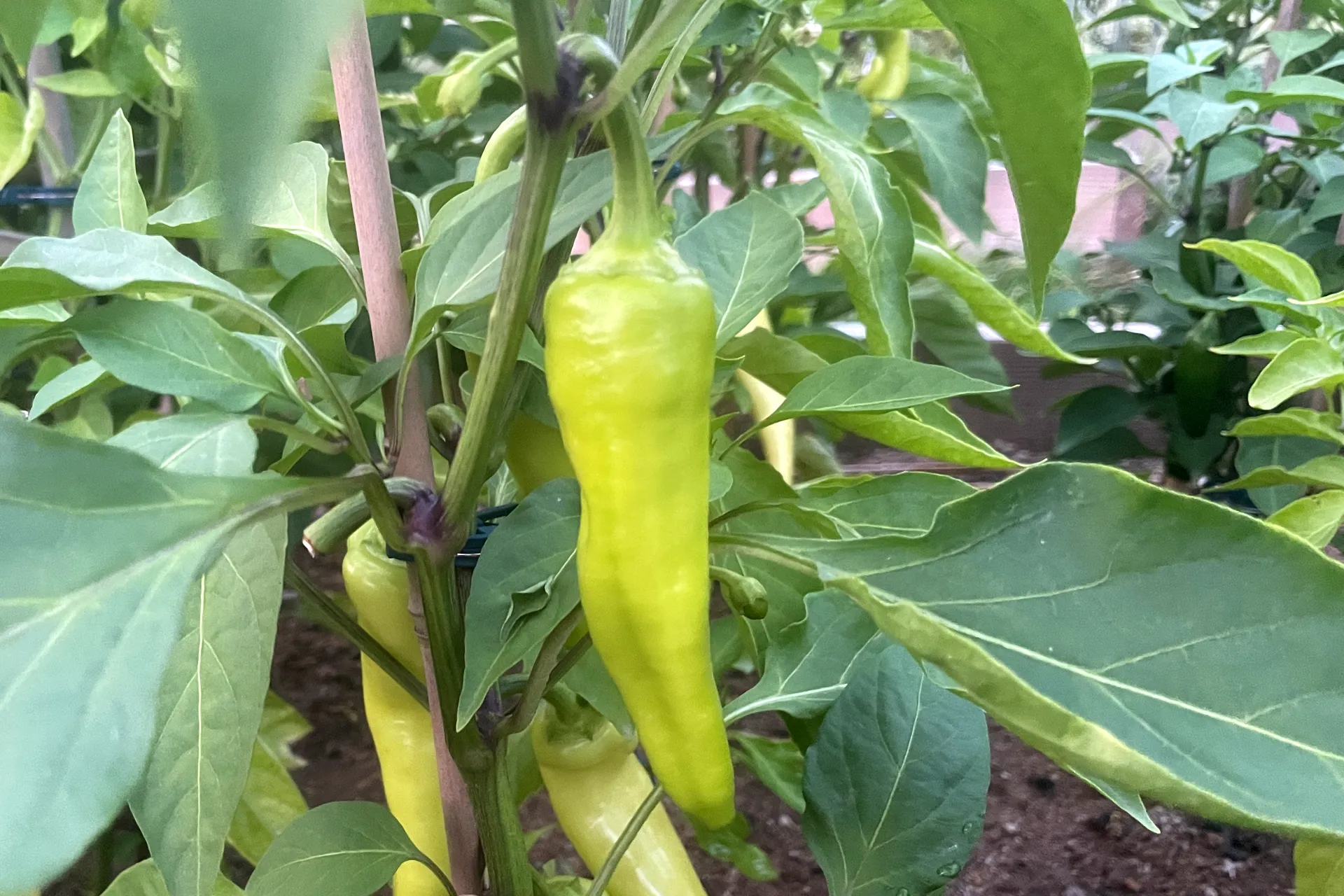This post may contain affiliate links. When you purchase through links on my site, I may earn a commission at no cost to you. See my Privacy Policy for details.
Growing peppers can be a rewarding experience for gardeners of all levels. Not only do peppers add a burst of flavor and spice to meals, but they are also packed with essential vitamins and nutrients, making them a healthy addition to any diet. I have found that peppers are one of my favorite crops to grow in my garden. It is one vegetable that my entire family will eat. They do fantastic every year and I have included them in my garden plan.
To successfully grow peppers and enjoy a bountiful harvest, it is important to understand their unique growing requirements and care. From choosing the right pepper varieties to preparing the soil, watering, and fertilizing, supporting the plants, and managing pests and diseases, knowing how to grow peppers properly is crucial for a successful and enjoyable gardening experience.
Choose Pepper Varieties
Choosing the right pepper varieties is important to ensure successful growth and harvest. There are many types of peppers, ranging in flavor, heat, and color. Some of the most common pepper varieties include bell peppers, jalapenos, habaneros, bananas, and serranos. When selecting a pepper variety, it is important to consider the plant’s growing requirements, such as sunlight, water, and soil conditions.
Bell peppers, for example, are a popular choice for beginners as they are easy to grow and have a mild, sweet flavor. They thrive in full sun and well-draining soil and require regular watering. Jalapenos, on the other hand, are known for their spicy kick and are a great choice for those looking to add some heat to their dishes. They also require full sun and well-draining soil but can tolerate slightly drier conditions than bell peppers.

Other pepper varieties, such as habaneros and serranos, require more specific growing conditions and may not be suitable for beginners. Habaneros, for example, require high heat and humidity, while serranos prefer warmer temperatures and consistent moisture. It is important to research the specific growing requirements of each pepper variety before planting to ensure the best results.
For beginners, it is recommended to start with easier varieties such as bell peppers or jalapenos. These peppers are widely available, easy to find, and relatively easy to grow. They also provide a good foundation for learning the basics of pepper growing, such as soil preparation, watering, and fertilizing. As you gain more experience, you can branch out into other pepper varieties and experiment with different flavors and heat levels.
Pepper Heat Levels
Heat levels in peppers are determined by a compound called capsaicin, which is found in the pepper’s flesh and seeds. The level of capsaicin in a pepper determines its spiciness, or heat level.
The Scoville scale is used to measure the heat level of peppers, with milder peppers such as bell peppers measuring at 0 Scoville units, and extremely hot peppers such as the Carolina Reaper measuring up to 2.2 million Scoville units.
Peppers can vary widely in their heat levels, even within the same variety, depending on growing conditions and other factors. It is important to research the heat level of the pepper varieties you are planting to ensure you are selecting the right peppers for your needs. Additionally, it is important to handle hot peppers with care, as the capsaicin can cause skin irritation and eye irritation if not handled properly.
Prepare the soil for Growing Peppers
Preparing the soil is a crucial step in growing healthy and productive pepper plants. Soil preparation ensures that the plants have access to the necessary nutrients and water, and can establish strong roots. Before planting peppers, it is important to prepare the soil properly.
- Clear the area: Start by clearing the area where you will be planting the peppers. Remove any weeds or debris, and break up any large clumps of soil.
- Test the soil: Test the soil to determine its pH level and nutrient content. Peppers prefer a pH level between 6.0 and 6.8. If the soil pH is too high or too low, you may need to add lime or sulfur to adjust it.
- Add compost: Add a generous amount of compost to the soil. Compost adds organic matter and nutrients to the soil, which helps improve soil structure and fertility. Aim to add at least 2-3 inches of compost to the soil.
- Add other amendments: Depending on the soil test results, you may need to add other amendments such as bone meal, blood meal, or fish emulsion to provide additional nutrients to the soil.
- Mix and blend: Use a shovel or garden fork to mix and blend the compost and other amendments into the soil. Continue to mix until the soil is loose, crumbly, and well-draining.
- Level the soil: Use a rake to level the soil and create a smooth surface for planting.
By preparing the soil properly, you can ensure that your pepper plants have the best possible start and can thrive throughout the growing season.
Planting Peppers
Knowing when to plant peppers is key to a successful harvest. Peppers are a warm-season crop, and they require warm soil and air temperatures to germinate and grow. In general, peppers should be planted in the spring after the last frost date for your area.
Instructions for planting peppers from seeds or seedlings:
- Start seeds indoors: If starting from seed, begin planting indoors 8-10 weeks before your expected last frost date. Fill seed trays with seed starting mix and plant 2-3 seeds per cell. Keep the soil moist and warm, and provide plenty of light.
- Harden off seedlings: When the seedlings have 2-3 sets of leaves, they are ready to be transplanted. Begin hardening off the seedlings by gradually exposing them to outdoor conditions over 7-10 days.
- Choose a planting site: Choose a sunny location with well-draining soil. Peppers prefer a soil temperature of at least 60°F (15.5°C).
- Plant the seedlings: Dig a hole that is slightly larger than the root ball of the seedling. Place the seedlings in the hole and backfill with soil. Water well.
- Proper spacing: Peppers should be spaced 18-24 inches apart. This allows for adequate air circulation and sunlight, which helps prevent diseases and ensures even growth.
- Arrange in the garden: Depending on the size of your garden, you may choose to plant peppers in rows in the ground or raised beds. Some gardeners also plant peppers in containers, which can be moved indoors or to a sheltered location during cold spells.
Watering and Fertilizing Peppers
Regular watering and fertilizing are important for growing healthy and productive pepper plants. Proper watering ensures that the plants have access to the necessary moisture, while fertilizing provides the essential nutrients that they need to thrive.
Guidelines for watering and fertilizing pepper plants:
- Watering: Peppers require consistent moisture throughout the growing season. Aim to water the plants deeply once or twice per week, depending on the weather and soil conditions. It is important to avoid overwatering, as this can lead to root rot and other issues.
- Fertilizing: Peppers benefit from regular fertilization to provide the necessary nutrients for growth and fruit production. Use a balanced fertilizer with equal amounts of nitrogen, phosphorus, and potassium, such as a 10-10-10 or 20-20-20. Apply the fertilizer according to the package instructions, usually once per month during the growing season.
- Mulching: Mulching around the base of the pepper plants can help to retain moisture and suppress weeds. Apply a layer of organic mulch, such as straw or shredded leaves, around the plants.
- Composting: Composting is another way to provide organic nutrients to the soil. Use compost as a top dressing around the base of the plants or mix it into the soil before planting.
- Avoiding excess nitrogen: While peppers require nitrogen for healthy growth, too much nitrogen can lead to excessive leaf growth at the expense of fruit production. Avoid using high-nitrogen fertilizers or over-fertilizing with nitrogen-rich amendments.
Supporting Growing Pepper Plants
As pepper plants grow, they can become heavy with fruit and may need support to prevent them from breaking or bending. Providing support for pepper plants can also help to keep them upright and maximize sunlight exposure, leading to better fruit production.

Instructions for using stakes, cages, or trellises to support pepper plants:
- Stakes: Use a sturdy wooden or metal stake that is at least 2 feet tall for each pepper plant. Drive the stake into the ground about 6 inches away from the plant, being careful not to damage the roots. Tie the stem of the plant to the stake using a soft material such as twine or garden tape, being careful not to tie it too tightly.
- Cages: Place a wire tomato cage around each pepper plant, pushing the legs of the cage into the ground to anchor it. As the plant grows, gently tuck the branches inside the cage to provide support. This will also help to keep the fruit off the ground, which can reduce the risk of rot and disease.
- Trellises: Use a trellis or netting to provide support for pepper plants that have a vining or climbing habit, such as some hot pepper varieties. Attach the trellis or netting to sturdy posts or poles, and train the plants to climb using twine or garden tape.
When choosing a support system for your pepper plants, consider the size and growth habits of the plant, as well as the weight of the fruit.
Pruning Pepper Plants
When growing peppers pruning your plants can have several benefits, including increasing airflow and sunlight penetration, improving plant shape and structure, and promoting more fruit production. It is important to prune pepper plants properly to avoid damaging them and reduce the risk of disease.
Instructions for pruning pepper plants:
- When to prune: Wait until the pepper plants have grown to at least 8-10 inches tall before pruning. It is best to prune early in the morning or late in the afternoon when the plants are less stressed.
- How to prune: Use a clean, sharp pair of pruning shears to remove any dead or diseased leaves or branches. Also, remove any suckers that grow in the crotch between the main stem and a branch. This will help promote more fruit production by directing the plant’s energy towards the remaining branches.
- Don’t over-prune: Avoid pruning more than 1/3 of the plant at any one time, as this can stress the plant and reduce its ability to produce fruit.
- Pinching the top: Pinching off the top of the pepper plant can also encourage more branching and fruit production. Wait until the plant is at least 12 inches tall, and then pinch off the top set of leaves using your fingers or a clean pair of scissors.
By following these guidelines for pruning pepper plants, you can help promote healthy growth and maximize fruit production. Remember to only prune when necessary and avoid over-pruning, as this can stress the plant and reduce its ability to produce fruit.
Managing Pests and Diseases in Pepper Plants
When growing pepper plants they can be susceptible to a variety of pests and diseases, which can impact their growth and fruit production. Here are some common pests and diseases that affect pepper plants, and tips for preventing and managing them:
- Aphids: These small, pear-shaped insects can suck the sap from pepper plants, causing leaves to wilt and curl. To prevent aphids, avoid over-fertilizing your plants, as this can attract them. You can also spray the plants with a strong stream of water to dislodge the aphids or use an insecticidal soap.
- Spider mites: These tiny pests can cause yellowing and webbing on the leaves of pepper plants. To prevent spider mites, keep the plants well-watered and avoid using dusty potting soil. You can also use a neem oil spray to manage spider mites.
- Fusarium wilt: This fungal disease can cause yellowing and wilting of the leaves and stems of pepper plants. To prevent fusarium wilt, make sure to plant your pepper plants in well-draining soil and avoid over-watering. If your plants are already infected, remove and dispose of the affected plants and soil, and avoid planting peppers in that area for at least three years.
- Blossom end rot: This condition can cause the ends of pepper fruits to turn brown and rot. To prevent blossom end rot, make sure to keep the soil consistently moist and avoid over-fertilizing. You can also add calcium to the soil, either by using a calcium-rich fertilizer or by adding crushed eggshells to the soil.
- Bacterial spot: This disease can cause dark spots on the leaves and fruits of pepper plants. To prevent bacterial spot, avoid overcrowding your plants, as this can promote the spread of the disease. You can also use a copper-based fungicide to manage bacterial spot.
Keeping a close eye on your pepper plants and taking proactive steps will help prevent and manage pests and diseases.
Harvesting Peppers
Harvesting peppers is an exciting part of growing these flavorful fruits. Here’s what you need to know about when and how to harvest peppers:

- Knowing when to harvest: Peppers can be harvested at any stage of maturity, but their flavor and heat level will vary depending on when they are picked. Generally, peppers are ready to be harvested when they have reached their mature size and have developed their characteristic color. For example, green bell peppers will turn red or yellow when they are fully mature. You can also gently squeeze the pepper to check if it feels firm and plump, which is a sign that it is ready to be picked.
- How to harvest: To harvest peppers, use a sharp pair of garden shears or scissors to cut the stem of the pepper just above the fruit. Be careful not to damage the plant or any neighboring fruits as you harvest. It’s also a good idea to wear gloves when handling hot peppers to protect your skin from their oils.
- Storing harvested peppers: Once you have harvested your peppers, store them in a cool, dry place away from direct sunlight.
- Peppers can be stored in the refrigerator for up to two weeks
- Frozen for longer storage. To freeze peppers, simply wash and dry them, then chop them into pieces and place them in an airtight container or freezer bag or vacuum seal them before putting them in the freezer.
- Dehydrated: You can also dry your peppers in a food dehydrator and grind them up to make pepper flakes. We love to make our paprika powder in our house.
- Canned: Many different canning recipes use peppers. Some of our favorites are Canning Banana Peppers and Zesty Salsa.
Growing peppers can be a fun and rewarding experience for beginner and longtime gardeners alike. With proper soil preparation, watering and fertilizing, support, pruning, and pest management, you can produce a bountiful harvest of delicious peppers in your garden.
By choosing the right varieties, you can grow peppers that meet your taste preferences and level of gardening experience. Whether you are starting with easy varieties like bell peppers or jalapeños or trying out something more challenging, growing peppers is a great way to add flavor and nutrition to your meals.
So why not give it a try and discover the joys of growing your peppers?
Some additional gardening and preserving articles you might like:

